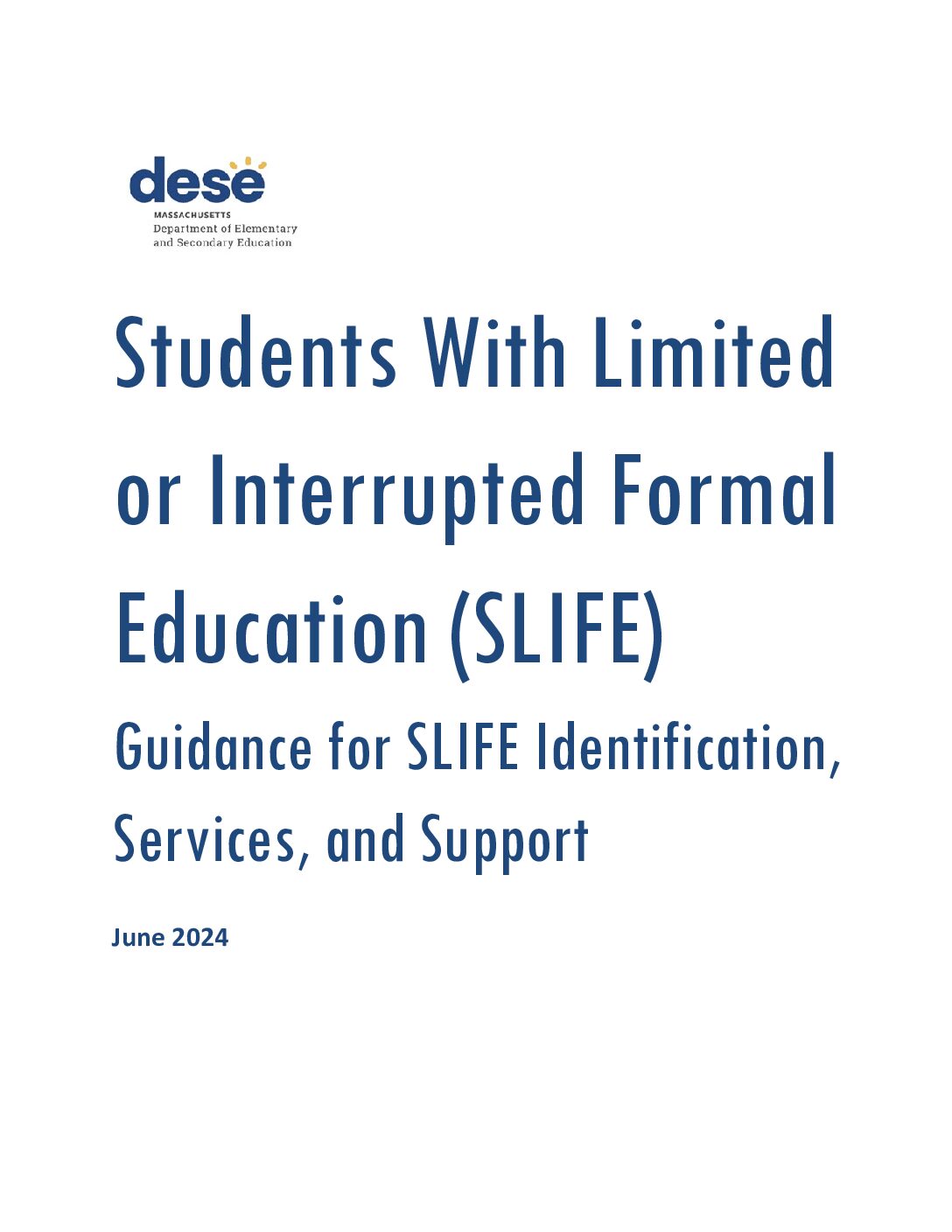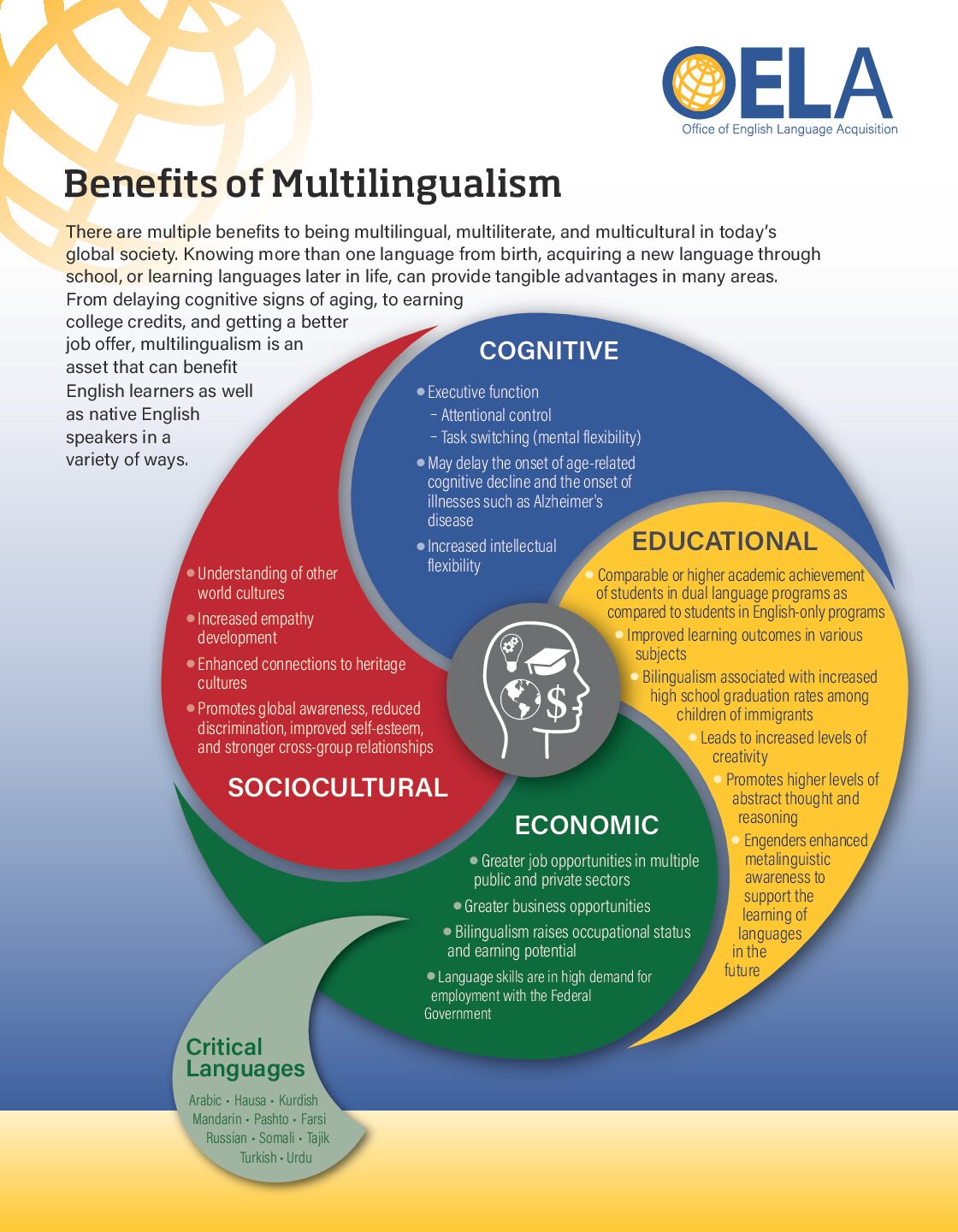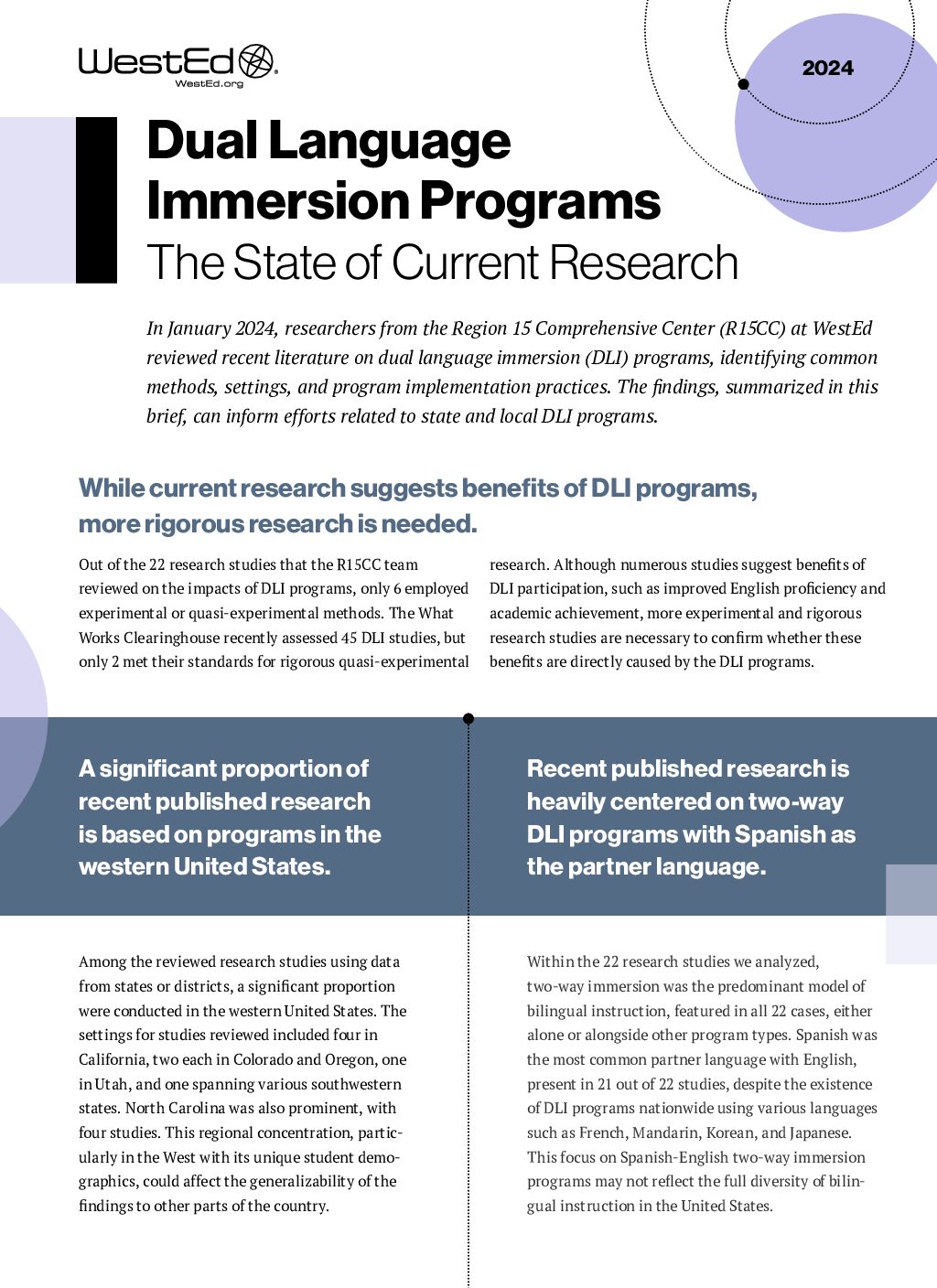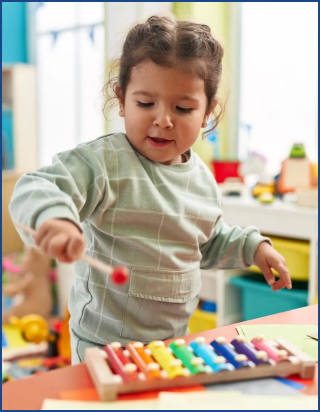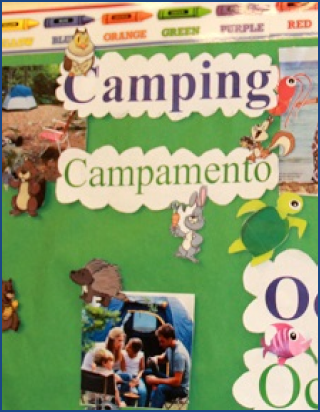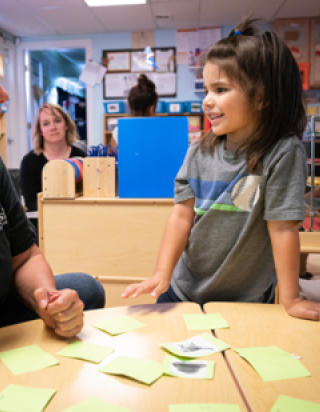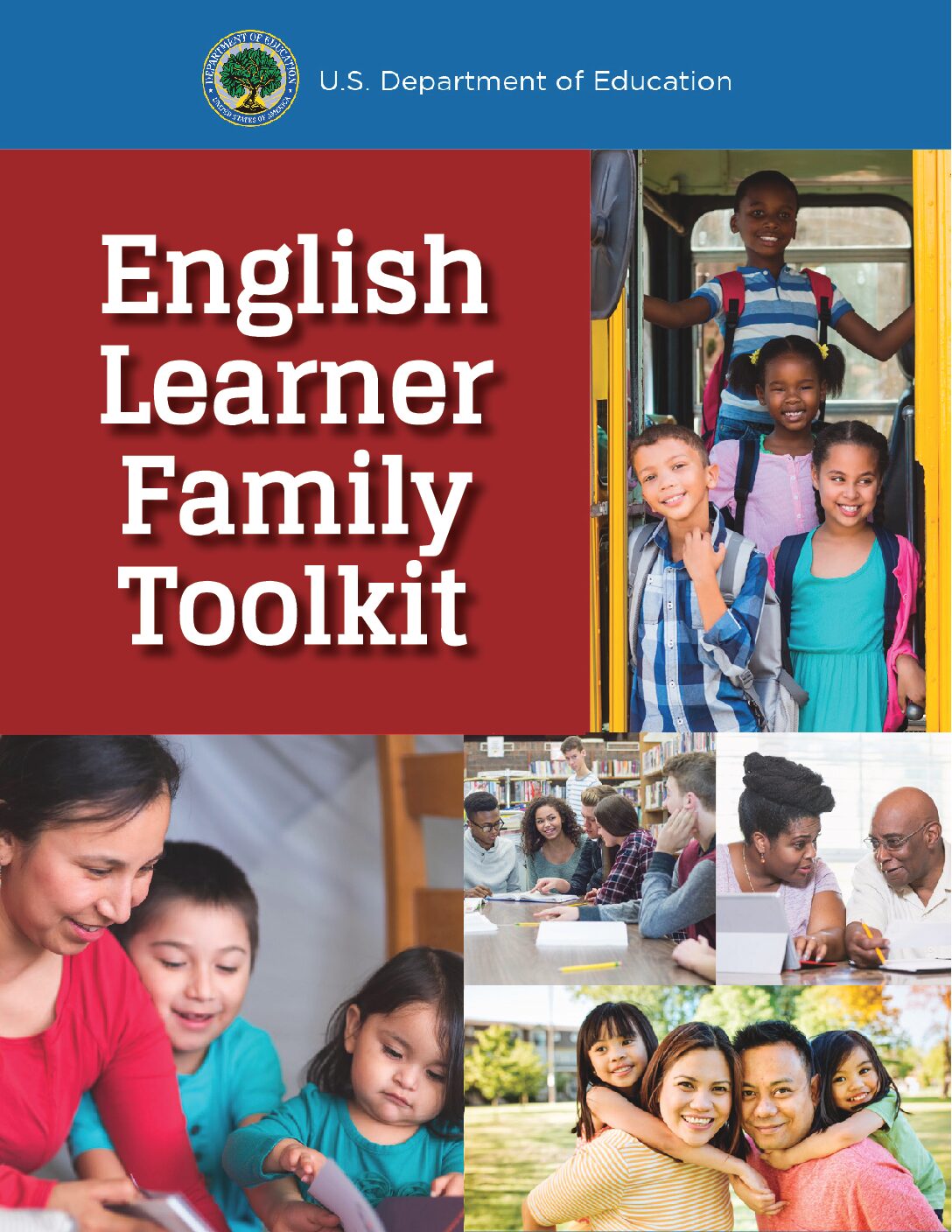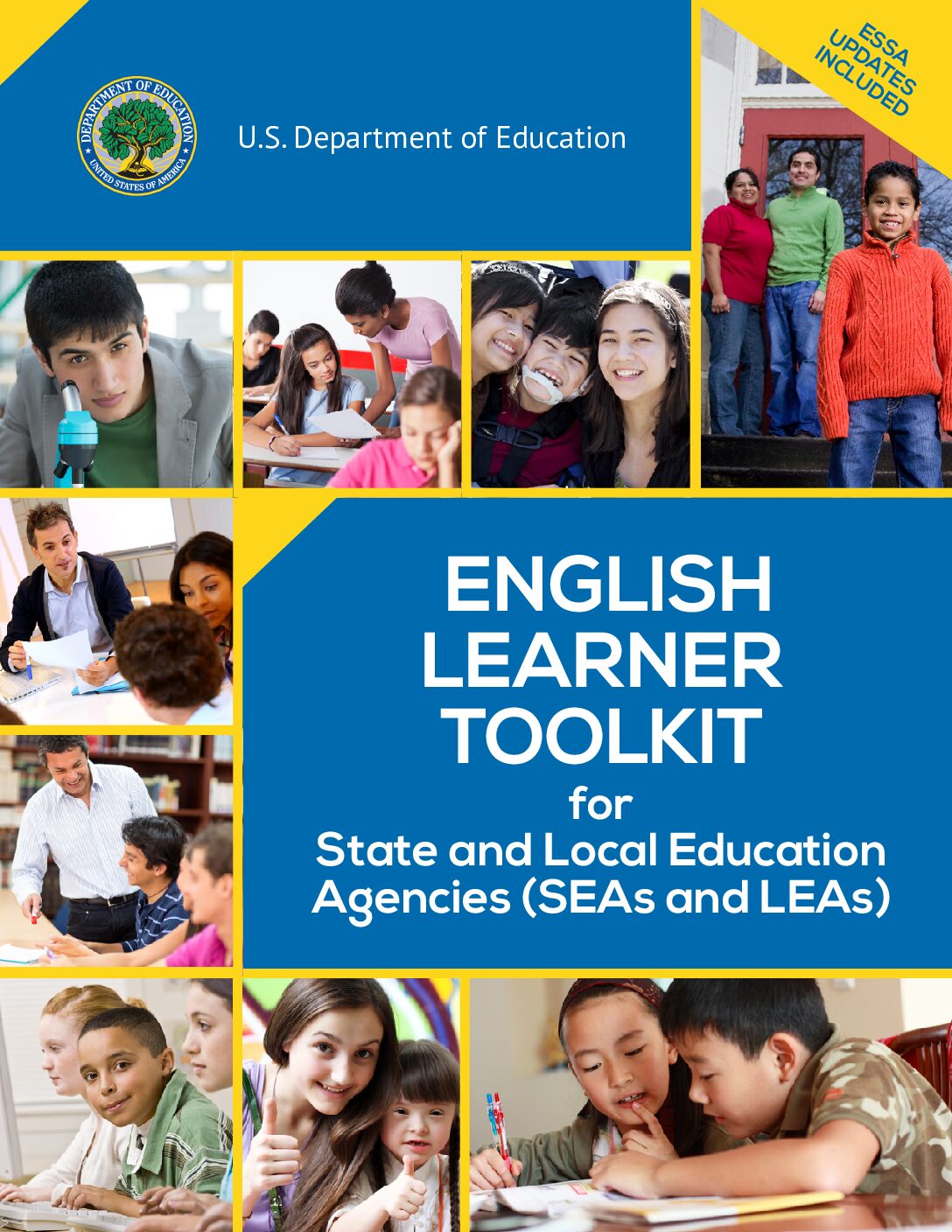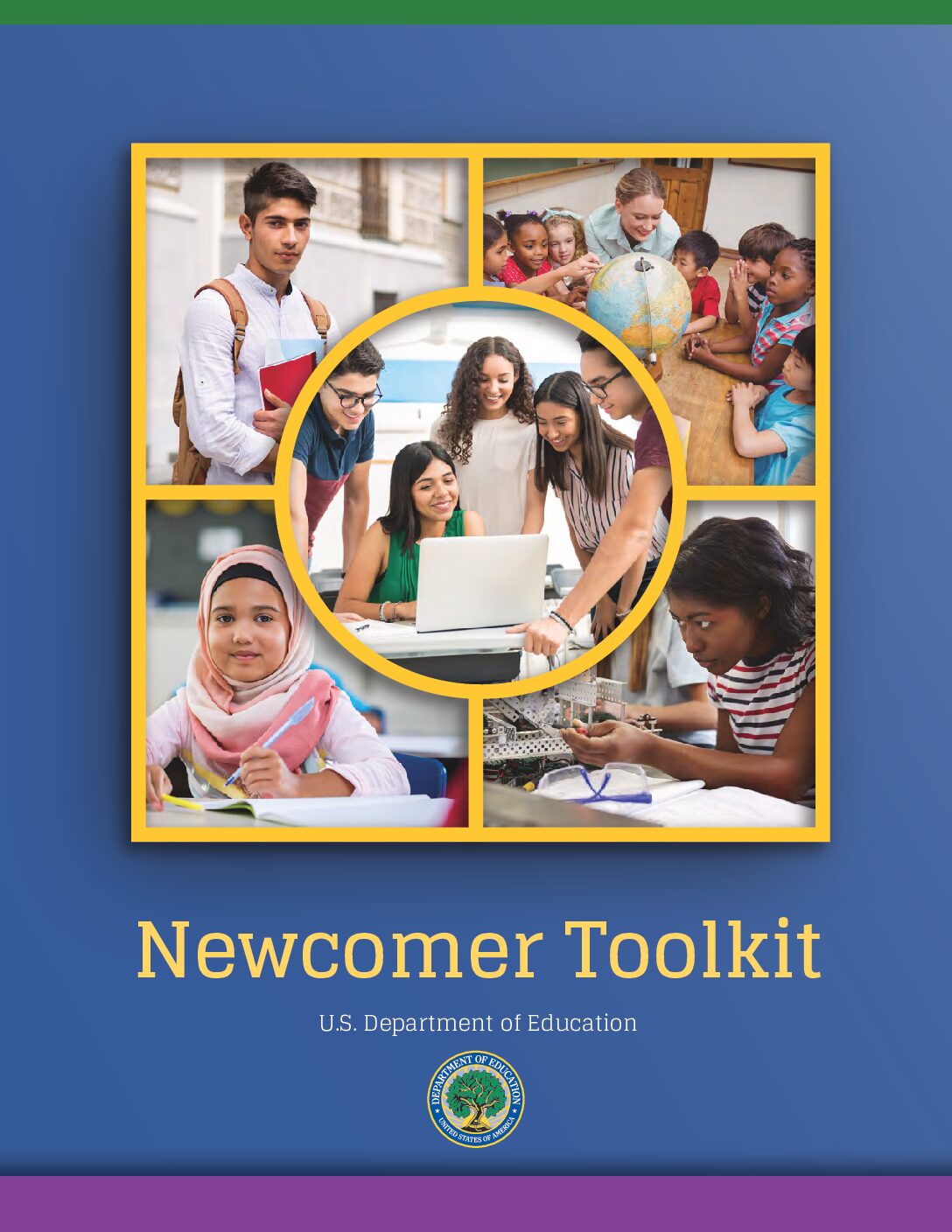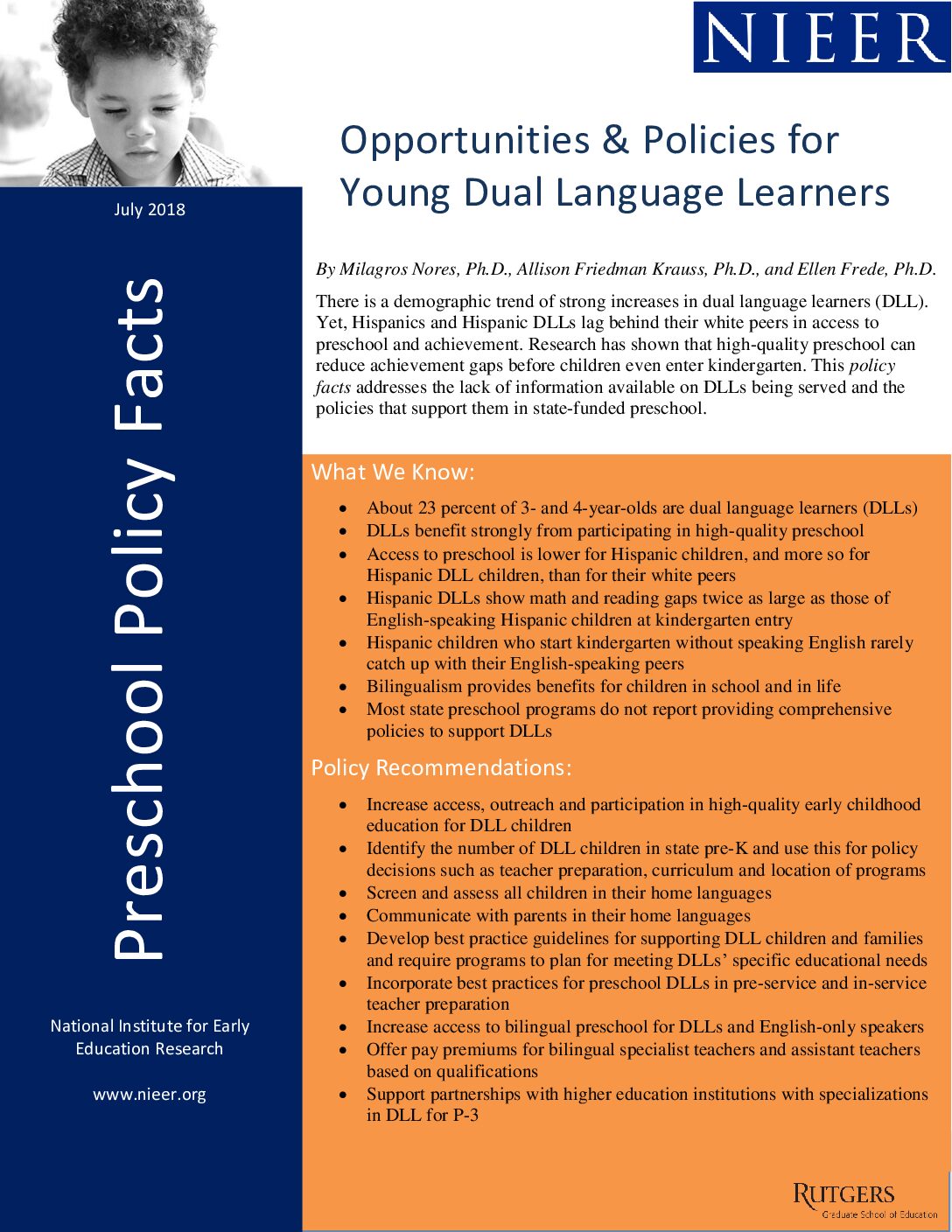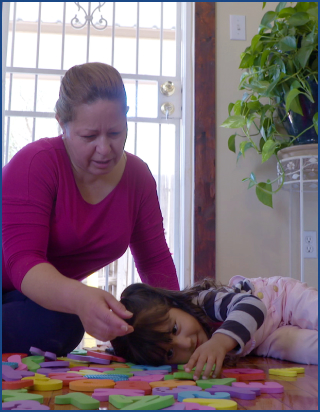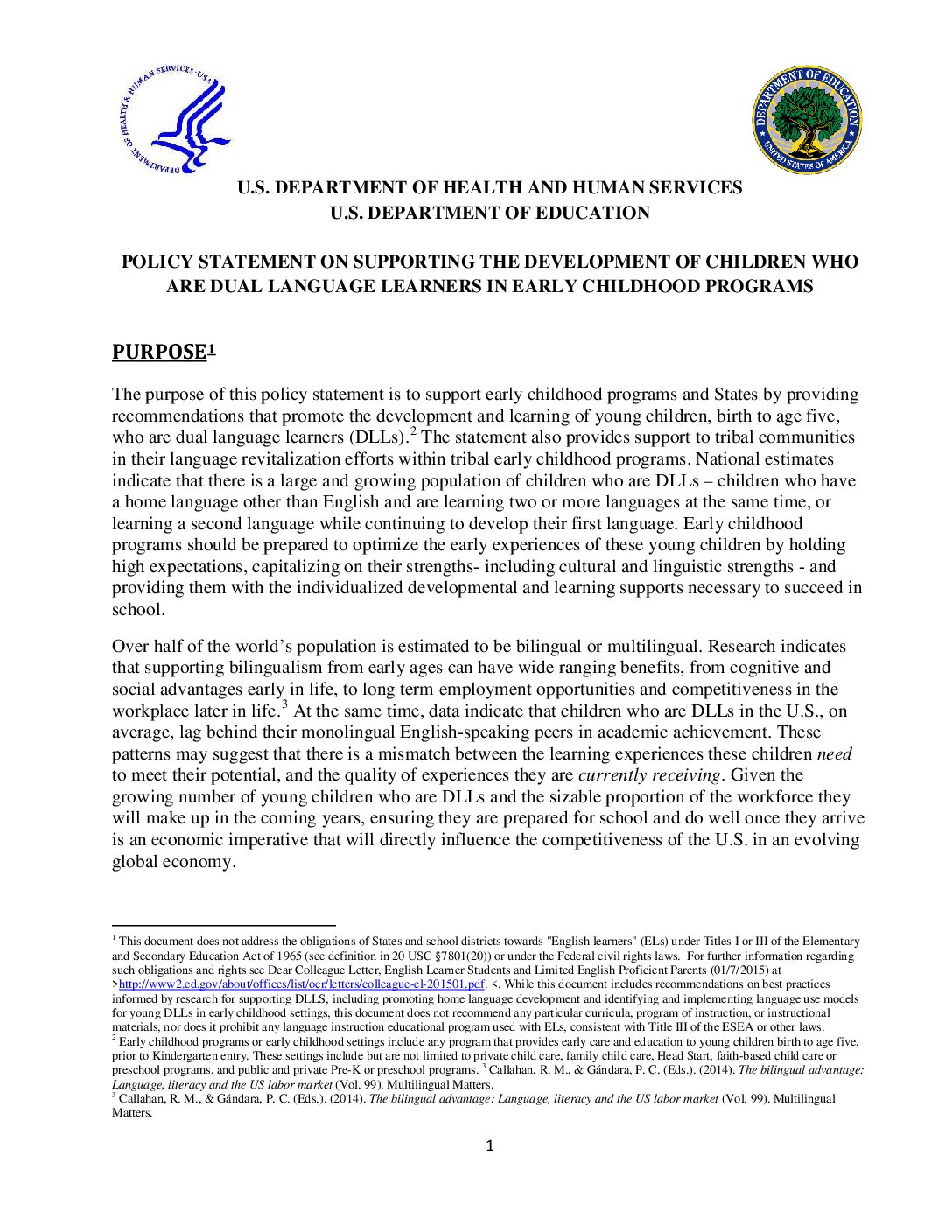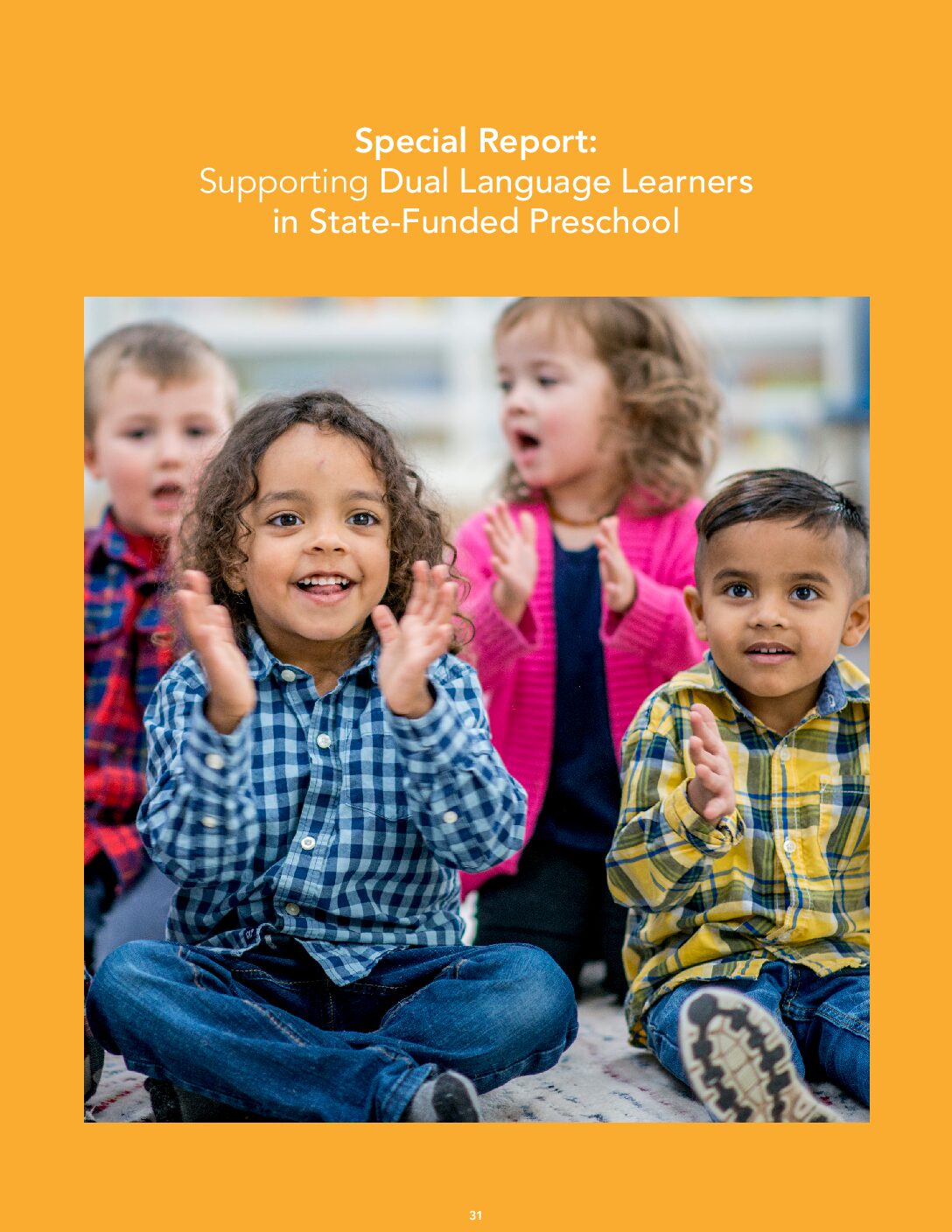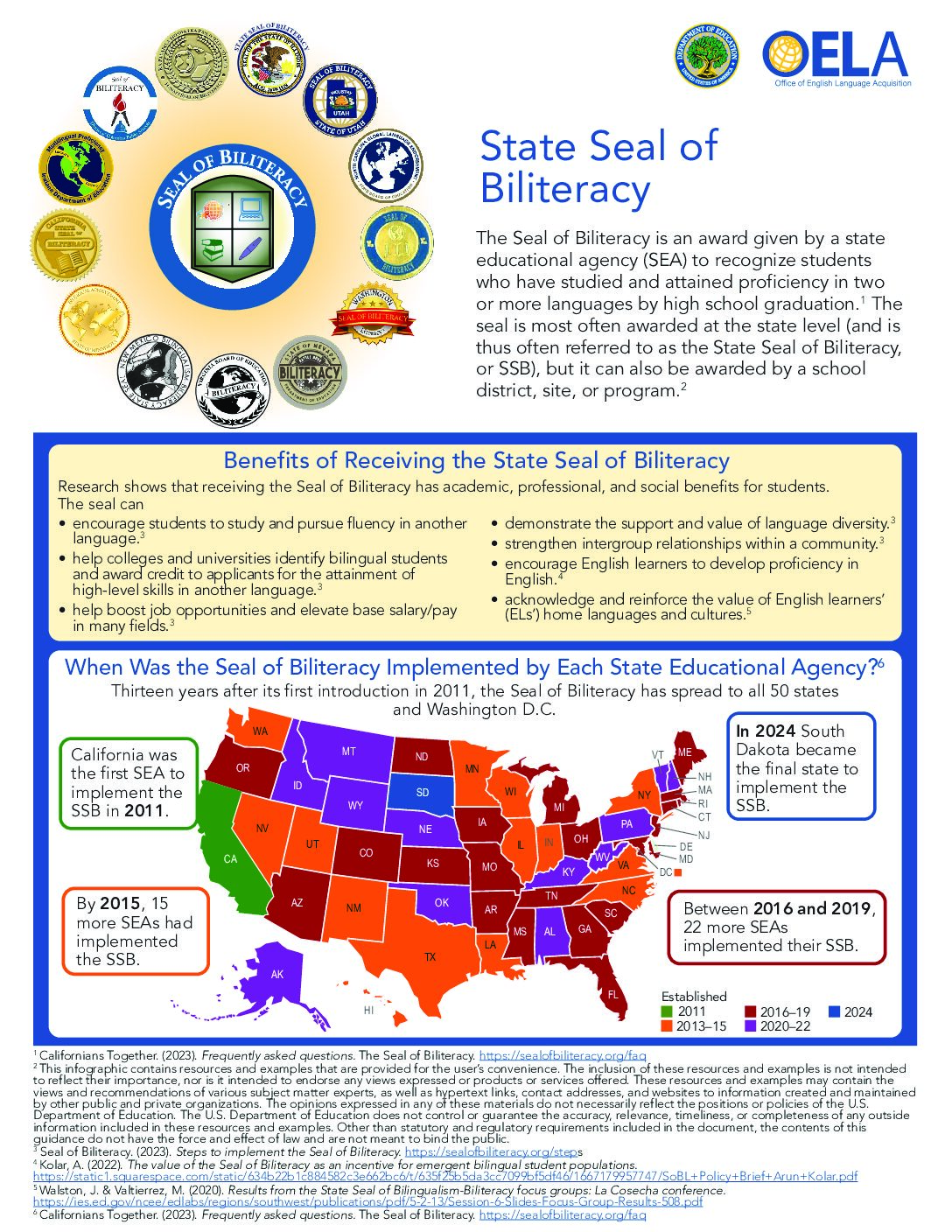Evidence-Based Resources and Guidance
District and school leaders, teachers, and families can access recommendations for program selection, development, implementation, and evaluation.
Topics
Audience
Resource Type
Published by the National Clearinghouse for English Language Acquisition. This infographic talks about the multiple benefits to being multilingual, multiliterate, and multicultural in today’s global society. Knowing more than one language from birth, acquiring a new language through school, or learning languages later in life, can provide tangible advantages in many areas. From delaying cognitive signs of aging, to earning college credits, and getting a better job offer, multilingualism is an asset that can benefit English learners as well as native English speakers in a variety of ways.
Published by Californians Together. The video, The Seal of Biliteracy — Celebrating Students of the 21st Century, presents the journey and voices of three students: Richard Robles, Sierra Vista High School graduate from Baldwin Park Unified School District, You Li and Elizabeth Paiva, graduates from Modesto City Schools who have all earned the Seal of Biliteracy. The Seal of Biliteracy is a seal affixed to the transcript or diploma of a graduating senior who has meet internationally benchmarked criteria to demonstrate proficiency in English and one or more world languages. The goal is biliteracy at a high level for graduating high schools seniors.
Published by Wested.org. This brief gives an overview on setting goals to build a strong foundation on Dual Language Immersion Programs, and how State and local leaders must establish clear goals for dual language immersion (DLI) programs to align interest holders, guide curricula and teaching, and ensure accountability for sustainable improvement. Research identifies the following critical elements for DLI program goals: leadership and advocacy, strategic program development, inclusivity, and expectations.1 Together, these elements form a robust foundation for DLI programs.
Published by Wested.org. This brief gives an overview of the state of current research on Dual Language Immersion Programs. In January 2024, researchers from the Region 15 Comprehensive Center (R15CC) at WestEd reviewed recent literature on dual language immersion (DLI) programs, identifying common methods, settings, and program implementation practices. The findings, summarized in this brief, can inform efforts related to state and local DLI programs.
Published by the National Institute For Early Education Research (NIEER). In this website stakeholders will find Research about best practices for Dual Language Learners that not only benefits DLLs directly but also enriches the overall early education landscape by promoting culturally responsive and equitable educational approaches. The research and tools can guide the development of teacher preparation programs, ongoing professional development, and policies needed to create systems that best support DLLs in classroom spaces.
Published by The Head Start and The Early Childhood Learning & Knowledge Center (ECLKC). This website provides resources offer information and guidance on the needs of children who are acquiring two or more languages at the same time or are learning a second language while developing their first. Besides dual language learner (DLL), other terms that resources may use when referring to these children include bilingual, English language learner (ELL), Limited English Proficient (LEP), English leaner, and children who speak a Language Other Than English (LOTE).
Published by the National Clearinghouse for English Language Acquisition. Published by the National Clearinghouse for English Language Acquisition. This fact sheet presents information about children under the age of 6 growing up speaking a language other than English at home. Disparities between DLL households and English language households in accessing high-quality, affordable, early care and education options are highlighted.
Published by American Educators. This article surveys the growing body of research to help inform educators responsible for creating settings for young DLLs. Concern over the achievement of this population of students has led to a large number of recent research reviews and professional publications aimed at improving preschool DLLs’ educational opportunities.
Published by The Head Start and The Early Childhood Learning & Knowledge Center (ECLKC). This module talks about the components of effective program and family support of dual language learners (DLLs). They include first and second language development, family engagement, intentional language support, and examining beliefs and culture. It also gives foundational knowledge about dual/multiple language development and ways to support the development of and engage the families of children who are DLLs. At the end of the module, users will be able to describe foundational knowledge about DLLs and strategies for effectively supporting their development.
Published by the Institute of Education Science (IES) and the What Works Clearinghouse (WWC). This brief examines dual language programs that (1) span at least the elementary grades; and (2) provide at least 50 percent of instruction in the partner language. The What Works Clearinghouse (WWC) reviews existing research on educational interventions to identify evidence-based programs and practices. This WWC intervention report summarizes the available evidence on the effects of dual language programs on student outcomes.
Published by the U.S. Department of Education and the Office of English Language Acquisition. This report contains resources and examples that are provided for the user’s convenience. The inclusion of these resources and examples is not intended to reflect their importance, nor is it intended to endorse any views expressed or products or services offered. These resources and examples may contain the views and recommendations of various subject matter experts, as well as hypertext links, contact addresses, and websites to information created and maintained by other public and private organizations. The opinions expressed in any of these materials do not necessarily reflect the positions or policies of the U.S. Department of Education. The U.S. Department of Education does not control or guarantee the accuracy, relevance, timeliness, to bind the public. or completeness of any outside information included in these resources and examples. Other than statutory and regulatory requirements included in the document, the contents of this guidance do not have the force and effect of law and are not meant
Published by the U.S. Department of Education and the Office of English Language Acquisition. The English Learner Family Toolkit presents information on questions families may have about public schools in the United States. The chapters are, 1) Enrolling Your Child in School; 2)Attending School in the United States; 3)Additional Educational Programs and Services for your Child; 4)Finding Extracurricular Activities for Your Child; 5)The Health and Safety of Your Child at School; and 6)Helping Your Child Be Successful in School. Each topic covered in the English Learner Family Toolkit is divided into five parts: (1) Overview, (2) Family and Student Rights, (3) Suggested Questions to Ask School Staff, (4) Tips for Families, and (5) Resources. All resources in the Toolkit are available online free of charge.
Published by seven organizations (ACTFL, Modern Language Association, National Association for Bilingual Education, National Association of English Learner Program Administrators, National Council of State Supervisors for Languages, SealofBiliteracy.org and Californians Together, and TESOL International Association). This updated guidelines for implementation of the Seal of Biliteracy begins with advocacy for those students who do not yet have access to a State Seal of Biliteracy. It moves next to Pathways to Biliteracy to make it clear that states, districts, and schools need to nurture and develop English and other languages and varieties starting wherever the learners are and helping learners develop both languages to higher levels of proficiency. It also focus on Equity and Access to Opportunity because even though the Seal has grown in popularity, too many languages and students are still left behind. Finally, we share Implementation Guidelines for State Education Agencies, Public School Districts, and Non-Public Entities because they are the critical institutions typically responsible for implementing the Seal of Biliteracy.
Published by the U.S. Department of Education and the Office of English Language Acquisition. The Newcomer toolkit is a resource for state, local, and school leaders to support multilingual learners (MLs) and general education educators who directly serve immigrant and refugee students. The toolkit consists of five chapters: 1)Who Are Newcomers?; 2)Welcoming Newcomers to a Safe, Inclusive, and Thriving School Environment; 3)Supporting Newcomers’ Social and Emotional and Mental Health Needs ; 4) Providing High-Quality Instruction for Newcomers; and 5) Establishing Partnerships With Families. Each chapter includes (1) discussion of topics relevant to understanding, supporting, and engaging newcomer students and their families or guardians; (2) tools, research-based strategies, and examples of classroom and schoolwide practices in action; (3) chapter-specific professional learning activities for use in staff meetings or professional learning communities; and (4) selected resources for further information and assistance, most of which are available online at no cost.
Published by the National Institute For Early Education Research (NIEER). This policy brief addresses the lack of information available on DLLs being served and the policies that support them in state-funded preschool.
Published by newamerica.org. The article in this website talks about how high-quality ealry childhood education is particularly beneficial for DLLs’ early literacy, numerical skills, and English language development. Early childhood education provides young dual language learners with early exposure to the English language, access to a rich literacy environment, and opportunities to develop their language skills through conversation and play with peers and teachers.
Published by the U.S. Department of Health and Human Services U.S. Department of Education. The purpose of this policy statement is to support early childhood programs and States by providing recommendations that promote the development and learning of young children, birth to age five, who are dual language learners (DLLs).2 The statement also provides support to tribal communities in their language revitalization efforts within tribal early childhood programs. National estimates indicate that there is a large and growing population of children who are DLLs – children who have a home language other than English and are learning two or more languages at the same time, or learning a second language while continuing to develop their first language. Early childhood programs should be prepared to optimize the early experiences of these young children by holding high expectations, capitalizing on their strengths- including cultural and linguistic strengths – and providing them with the individualized developmental and learning supports necessary to succeed in school.
Published by The Massachusetts Department of Elementary and Secondary Education (DESE). This guidance document is to assist school districts with serving an increasing number of students with limited or interrupted formal education (SLIFE). This guidance aims to help districts identify additional supports these students may need beyond standard English learner services. The Department is committed to supporting school districts and educators to improve educational opportunities for all students, including students identified as SLIFE.
Published by the National Institute For Early Education Research (NIEER). This report examines the 2016-2017 State of Preschool survey included supplemental questions intended to shed light on state policies to support dual language learners (DLLs) in state-funded preschool. This is the second time a dual language supplement has been collected; the first was in 20142015. While many questions included in this second survey were asked two years ago, others were added, revised, or deleted to provide a clearer portrait of state preschool program policies that specifically relate to DLLs.
Published by Californians Together. This website provides information about what the Seal of Biliteracy is, why implement it and the steps to do so, and who awards the seal and what the process implies.
Published by the National Clearinghouse for English Language Acquisition. This infographic summaries important information on the State Seal of Biliteracy and it lays out the academic, professiona, and social benefits of receiving it. It also presents the requirenments for ELs and Non-ELs, and the criteria to demonstrate proficiency in a language other than English, which may vary across states. Additionally, this document shares some resommendations for schools districts to increase the number of students who earn State Seal of Biliteracy.

